#Solar Dynamics Observatory
Text
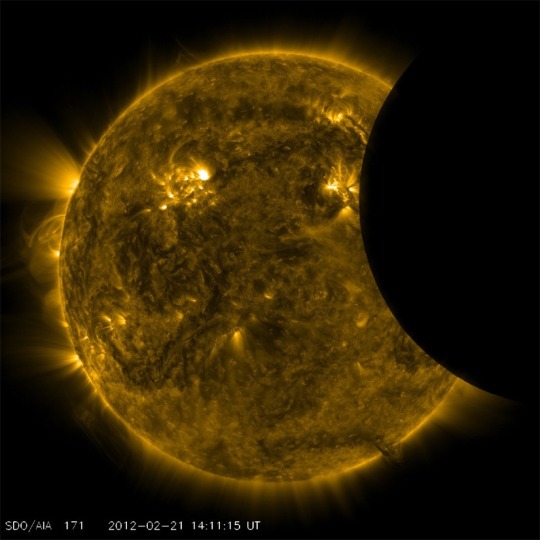


Partial Solar Eclipse Seen From Space
80 notes
·
View notes
Text

Venus transit from Solar Dynamics Observatory.
(Image credit: NASA)
25 notes
·
View notes
Text

Earth-Sun eclipse, as seen by NASA’s Solar Dynamics Observatory (SDO) satellite in 2011. Launched in 2010, SDO continues to diligently monitor the sun to this day.
“Twice a year, SDO enters an eclipse season where the spacecraft slips behind Earth for up to 72 minutes a day. Unlike the crisp shadow one sees on the sun during a lunar eclipse, Earth's shadow has a variegated edge due to its atmosphere, which blocks the sun light to different degrees depending on its density. Also, light from brighter spots on the sun may make it through, which is why some solar features extend low into Earth's shadow.” - NASA
(©)
#nasa#space#spaceflight#science#engineering#spacecraft#technology#space exploration#aerospace#sun#solar#solar dynamics observatory#nasa sdo#eclipse#earth#satellite#astrophotography#solar system#star
89 notes
·
View notes
Photo
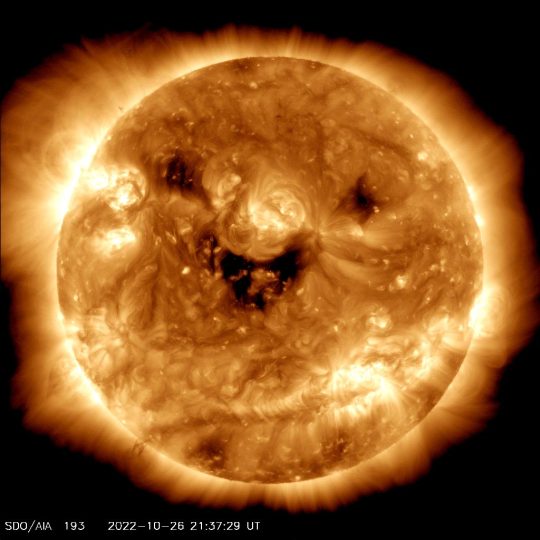
NASA's Solar Dynamics Observatory captured an image of the sun "smiling" in 193 angstrom light on Oct. 26.
NASA/GSFC/SDO
#art#photography#surreal#smile#sun#cosmic#cosmos#universe#NASA#solar dynamics observatory#smiling sun#october#GSFC#SDO
15 notes
·
View notes
Text

Happy Face.
NASA’s Solar Dynamics Observatory.
16 notes
·
View notes
Video
NASA’s NuSTAR Telescope Reveals Hidden Light Shows on the Sun by NASA's Marshall Space Flight Center
Via Flickr:
Even on a sunny day, human eyes can’t see all the light our nearest star gives off. A new image displays some of this hidden light, including the high-energy X-rays emitted by the hottest material in the Sun’s atmosphere, as observed by NASA’s Nuclear Spectroscopic Telescope Array (NuSTAR). While the observatory typically studies objects outside our solar system – like massive black holes and collapsed stars – it has also provided astronomers with insights about our Sun. In this composite image, NuSTAR data is represented as blue and is overlaid with observations by the X-ray Telescope (XRT) on the Japanese Aerospace Exploration Agency’s Hinode mission, represented as green, and the Atmospheric Imaging Assembly (AIA) on NASA’s Solar Dynamics Observatory (SDO), represented as red. NuSTAR’s relatively small field of view means it can’t see the entire Sun from its position in Earth orbit, so the observatory’s view of the Sun is actually a mosaic of 25 images, taken in June 2022. The high-energy X-rays observed by NuSTAR appear at only a few locations in the Sun’s atmosphere. By contrast, Hinode’s XRT detects low-energy X-rays, and SDO’s AIA detects ultraviolet light – wavelengths that are emitted across the entire face of the Sun. Image Credit: NASA/JPL-Caltech/JAXA #nasa #marshallspaceflightcenter #msfc #heliophysics #sun #space #solar #observation #star #astronomy #science #hinode #SDO #SolarDynamicsObservatory #NuSTAR Read More More about NuSTAR More about Solar Dynamics Observatory More about Hinode NASA Media Usage Guidelines
#NASA#NASA's#Marshall#Space#Flight#Center#Heliophysics#Sun#Hinode#NuSTAR#SDO#Solar Dynamics Observatory#Goddard Space Flight Center#GSFC#flickr
3 notes
·
View notes
Photo

NASA caught the sun literally smiling down on us : NPR
NASA's Solar Dynamics Observatory (SDO) this week captured an image of the sun in ultraviolet light featuring three dark patches that look like a smiling face — a face that could signal a solar storm with problems for Earth. ...
6 notes
·
View notes
Text
अंतरिक्ष से दिखा सूर्यग्रहण का अनोखा नजारा, 3 महीने बाद पृथ्वी से आएगा नजर
अंतरिक्ष से दिखा सूर्यग्रहण का अनोखा नजारा, 3 महीने बाद पृथ्वी से आएगा नजर
नासा (NASA) के पास कुछ ऐसे उपकरण हैं जिनसे सूरज (Sun) को सीधे तौर पर देखा जा सकता है. अंतरिक्ष में ऐसे ही एक खास उपकरण ने आंशिक सूर्य ग्रहण (Solar eclipse) की तस्वीर ली, ज�� चंद्रमा सूरज के करीब से गुजर रहा था.
नासा की सोलर डायनेमिक्स ऑब्जर्वेटरी (Solar Dynamics Observatory) 24 घंटे सूरज पर नजर रखती है. 29 जून को ऑब्जर्वेटरी और सूर्य के बीच चंद्रमा आया, जिसकी तस्वीर कैप्चर कर ली गई.
ग्रहण के चरम…

View On WordPress
3 notes
·
View notes
Text

A little something to "brighten" your day!
1 note
·
View note
Text
Nach 17 Jahren fliegt die NASA-Raumsonde STEREO-A zum ersten Mal an der Erde vorbei
Die NASA-Raumsonde STEREO-A wird am 12. August 2023 einen Erdvorbeiflug machen und somit den ersten Vorbeiflug seit Beginn ihrer Mission vor 17 Jahren abschließen. Die Zwillingsraumsonde STEREO wurde im Oktober 2006 gestartet und hat seitdem bahnbrechende wissenschaftliche Erkenntnisse über die Sonne geliefert. STEREO-A wird während des Vorbeiflugs stereoskopische Aufnahmen der Sonne machen und…
View On WordPress
0 notes
Text



1 note
·
View note
Video
youtube
133 Days on the Sun
0 notes
Link
#The Guardian#nasa#the sun#space#science#us news#sun#aurinko#hymy#smile#smiling sun#satellite#coronal hole#coronal holes#hymyilevä aurinko#say cheese!#Happy face#Solar Dynamics Observatory satellite#solar dynamics observatory
0 notes
Text
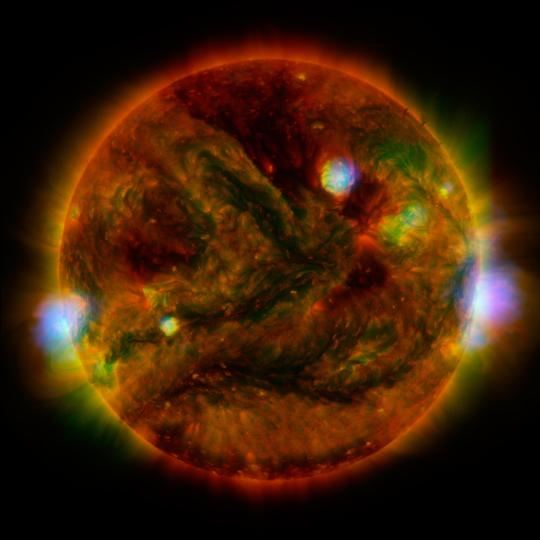
Flaring, active regions of the sun are highlighted in this image combining observations from several telescopes. High-energy X-rays from NASA's Nuclear Spectroscopic Telescope Array (NuSTAR) are shown in blue; low-energy X-rays from Japan's Hinode spacecraft are green; and extreme ultraviolet light from NASA's Solar Dynamics Observatory (SDO) is yellow and red.
(©)
#go for queue deploy#space is the place#nasa#space#spaceflight#sun#solar#nustar#hinode#solar dynamics observatory#jaxa#astrophotography#solar system#science#satellite#star#stars#outer space#space and astronomy#space is cool#spaceexploration
17 notes
·
View notes
Text
by nasasun & issnationallab
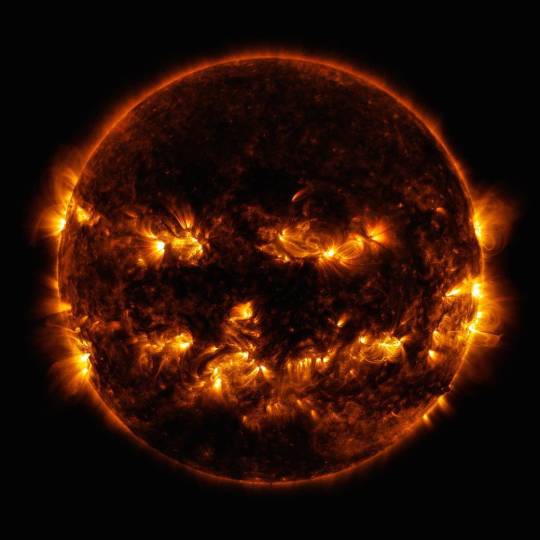
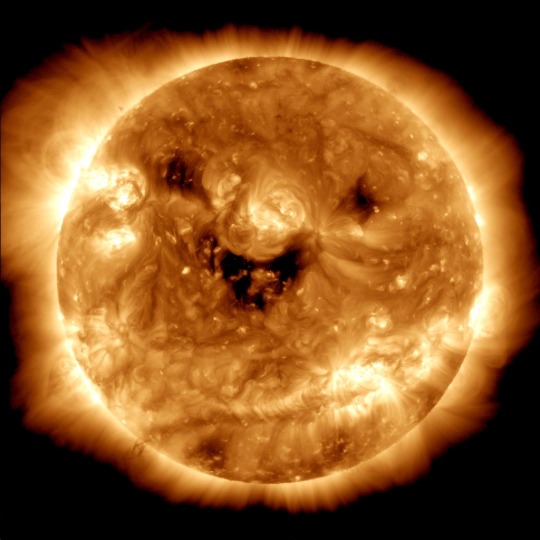
#sun#space#stars#nasa#solar system#spooky#halloween#cosmos#universe#science#astronomy#astrophotography#astrophysics#aesthetic#nature#naturecore#spacecore#nasa solar dynamic observatory#curators on tumblr#up
2K notes
·
View notes
Text
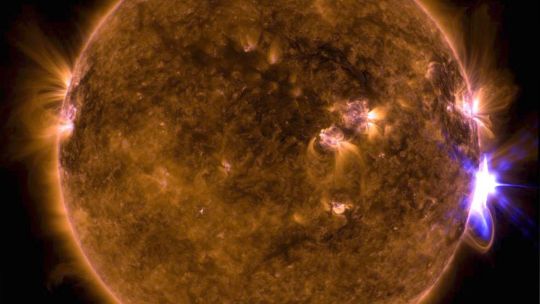
The bright flash of a solar flare captured by NASA's Solar Dynamics Observatory.
Dazzling images of the sun
(Image credit: NASA)
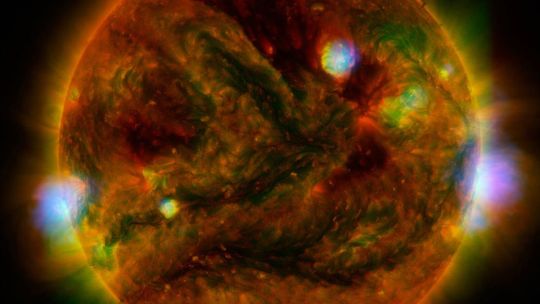
Active regions of the sun are shown with X-Ray imaging taken by the NuSTAR telescope.
#nasa#photographer#sun#space#astronomy#science#solar flare#nature#nasa's solar dynamics observatory#nustar telescope#x-ray image
24 notes
·
View notes
